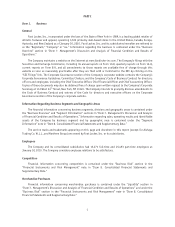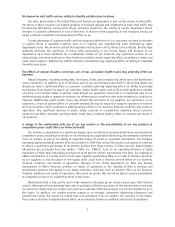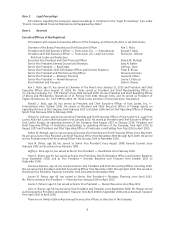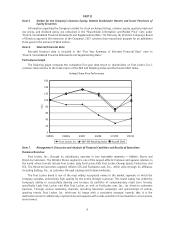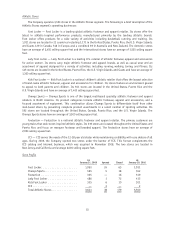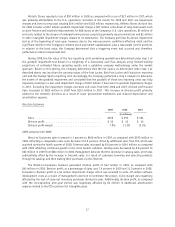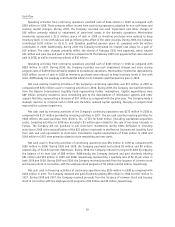Foot Locker 2009 Annual Report Download - page 29
Download and view the complete annual report
Please find page 29 of the 2009 Foot Locker annual report below. You can navigate through the pages in the report by either clicking on the pages listed below, or by using the keyword search tool below to find specific information within the annual report.
Direct-to-Customers
The Company’s direct-to-customers segment is multi-branded and multi-channeled. This segment sells,
through its affiliates, directly to customers through catalogs and its Internet websites. Eastbay, one of the
affiliates, is among the largest direct marketers in the United States, providing the high school athlete with a
complete sports solution including athletic footwear, apparel, equipment, team licensed, and private-label
merchandise. In 2008, the Company purchased CCS, an Internet and catalog retailer of skateboard equipment,
apparel, footwear, and accessories targeted primarily to teenaged boys. The retail store operations of CCS are
included in the Athletic Stores segment. This segment also operates websites aligned with the brand names of its
store banners (footlocker.com, ladyfootlocker.com, kidsfootlocker.com, footaction.com, champssports.com, and
ccs.com).
Franchise Operations
In March of 2006, the Company entered into a ten-year area development agreement with the Alshaya
Trading Co. W.L.L., in which the Company agreed to enter into separate license agreements for the operation of
Foot Locker stores, subject to certain restrictions, located within the Middle East. Additionally, in March 2007, the
Company entered into a ten-year agreement with another third party for the exclusive right to open and operate
Foot Locker stores in the Republic of Korea. A total of 22 franchised stores were operating at January 30, 2010.
Revenue from the franchised stores was not significant for any of the periods presented. These stores are not
included in the Company’s operating store count above.
Overview of Consolidated Results
The challenging environment experienced in 2008 continued into 2009 as unemployment levels continued
to rise and consumer confidence dropped further, which resulted in a decline in consumer spending. The
Company’s domestic operations were negatively affected; however, our international operations remained stable.
We began the year with inventory levels in line with sales, which allowed us to reduce the level of promotional
markdowns. The Company reported net income from continuing operations of $47 million or $0.30 per share for
the year ended January 30, 2010, which compares with a loss of $79 million or $0.52 per share for the year ended
January 31, 2009. Several factors affect the comparability of these two years, specifically:
• Impairment and other charges, before tax, totaled $41 million and $259 million in 2009 and 2008,
respectively.
• Impairment charges of $32 million were recorded in 2009 to reflect the impairment of store
long-lived assets, such as store fixtures and leasehold improvements, at the Company’s Lady
Foot Locker, Kids Foot Locker, Footaction, and Champs Sports divisions for 787 stores.
• A charge of $4 million was recorded in 2009 to write off certain software development costs for
the Direct-to-Customers segment as a result of management’s decision to terminate this project.
• A charge of $5 million was recorded in January 2010, to consolidate the Company’s Foot Locker,
Lady Foot Locker, Kids Foot Locker and Footaction operations under one management structure, as
well as certain corporate staff reductions taken to improve corporate efficiency.
• As the Company began its transition to a new apparel strategy, which requires that the inventory be
seasonally relevant and current, the Company recorded in 2009, within cost of sales, a $14 million
inventory reserve for certain aged apparel.
• Also included in 2009 are Canadian provincial tax rate changes that resulted in a $4 million reduction
in the value of the Company’s net deferred tax assets.
11


